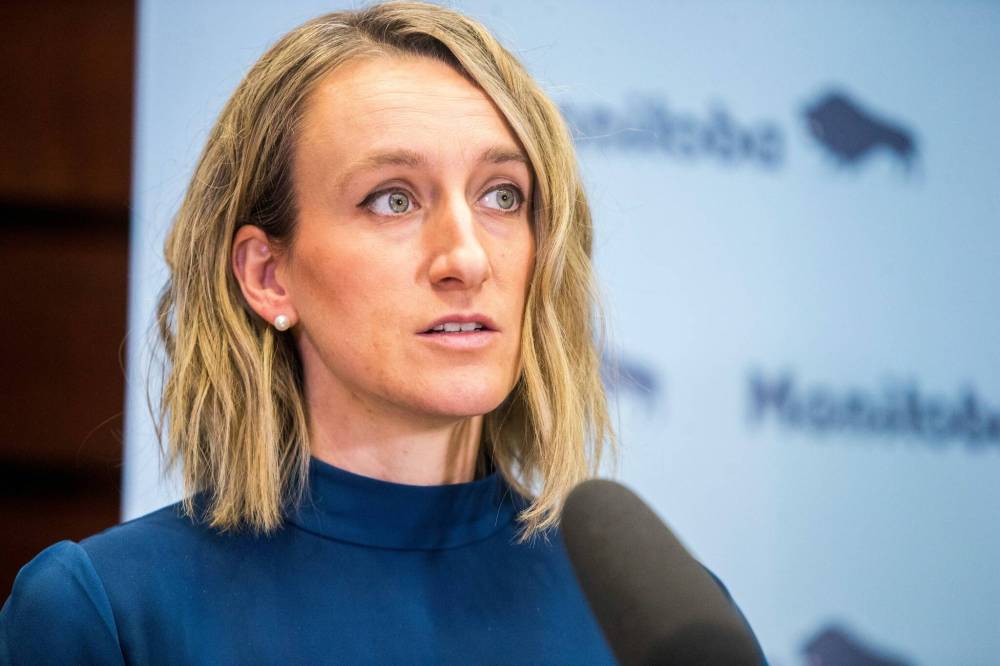Officials recommend third vaccine dose for higher-risk Manitoba teens
Advertisement
Read this article for free:
or
Already have an account? Log in here »
To continue reading, please subscribe:
Monthly Digital Subscription
$1 per week for 24 weeks*
- Enjoy unlimited reading on winnipegfreepress.com
- Read the E-Edition, our digital replica newspaper
- Access News Break, our award-winning app
- Play interactive puzzles
*Billed as $4.00 plus GST every four weeks. After 24 weeks, price increases to the regular rate of $19.00 plus GST every four weeks. Offer available to new and qualified returning subscribers only. Cancel any time.
Monthly Digital Subscription
$4.75/week*
- Enjoy unlimited reading on winnipegfreepress.com
- Read the E-Edition, our digital replica newspaper
- Access News Break, our award-winning app
- Play interactive puzzles
*Billed as $19 plus GST every four weeks. Cancel any time.
To continue reading, please subscribe:
Add Winnipeg Free Press access to your Brandon Sun subscription for only
$1 for the first 4 weeks*
*$1 will be added to your next bill. After your 4 weeks access is complete your rate will increase by $0.00 a X percent off the regular rate.
Read unlimited articles for free today:
or
Already have an account? Log in here »
Hey there, time traveller!
This article was published 07/02/2022 (1333 days ago), so information in it may no longer be current.
Third COVID-19 vaccine doses are now available for Manitoba teens from racialized and marginalized communities, as well as those with underlying medical conditions.
“We have a significant population of teens who fit the criteria, who are at higher risk of severe outcomes and would benefit from being as protected as possible against this virus and its variants,” Dr. Joss Reimer, medical lead for the province’s COVID-19 vaccine task force, told a news briefing Monday.
Following the advice of the National Advisory Committee on Immunization, Manitobans age 12 to 17 who are from a racialized or marginalized community that is disproportionately impacted by COVID-19, who live in group homes, shelters or correctional facilities, and those with underlying medical conditions, can receive a third dose of the vaccine six months after their second shot.

Reimer said eligible teens should receive the Pfizer vaccine. (Complete eligibility criteria is available at protectmb.ca.)
New data shows racialized Manitobans are at disproportionate risk of breakthrough infections, as well as severe illness from COVID-19, including intensive care admission, despite a higher rate of vaccine uptake. The data, released Monday, underscores why the province’s vaccine task force is opening up third-dose access to teens who are Black, Indigenous or people of colour.
Teens who have immunocompromising conditions are recommended to receive a fourth dose (a booster shot) six months after receiving their third dose. Third doses aren’t being offered for all teens.
“That is because most teens who’ve already received two vaccine doses are at very low risk of severe COVID-19 outcomes,” including with the Omicron variant, Reimer said.
Dr. Marcia Anderson, public health lead for the First Nations Pandemic Response Co-ordination Team, presented the new data. She said the numbers highlighted the need for Manitoba’s vaccine rollout to be more accessible and offer boosters at cultural and community centres, as well as at faith-based organizations.
“The sites that worked before will be done again,” she said.
Anderson said during the fall COVID-19 wave, fewer racialized people were admitted to hospital and intensive care compared to the third wave, through the spring and early summer 2021. That trend is now shifting again because of the Omicron variant.
The decrease in hospital admissions can be attributed to the rollout of second doses and increased accessibility in racialized communities, she said.
“Nothing else had changed. There is still systemic racism, there’s still overcrowded housing, there’s still higher rates of being in low-income or higher-risk occupations and yet, we see a dramatic difference in the proportion of cases occurring in these communities,” she said.
Provincial data also suggests vaccine uptake among racialized people is higher compared to white people, she said. About 75 per cent of racialized people received their first and second doses in Winnipeg, compared with 56 per cent of white people who received their vaccines in Winnipeg.
Higher vaccine uptake among racialized Manitobans has meant a greater proportion of infections started to be reported in people who identify as white, compared to previous waves.
“This is a remarkable public health success that occurred in collaboration with members, leaders of (Black, Indigenous and people of colour) communities,” Anderson said.
The province hasn’t been able to determine whether racialized Manitobans have been disproportionately affected by the surgical and diagnostic tests backlog, or by the ongoing transfer of hospital patients to other areas of the province.
— with files from Katie May
danielle.dasilva@freepress.mb.ca


